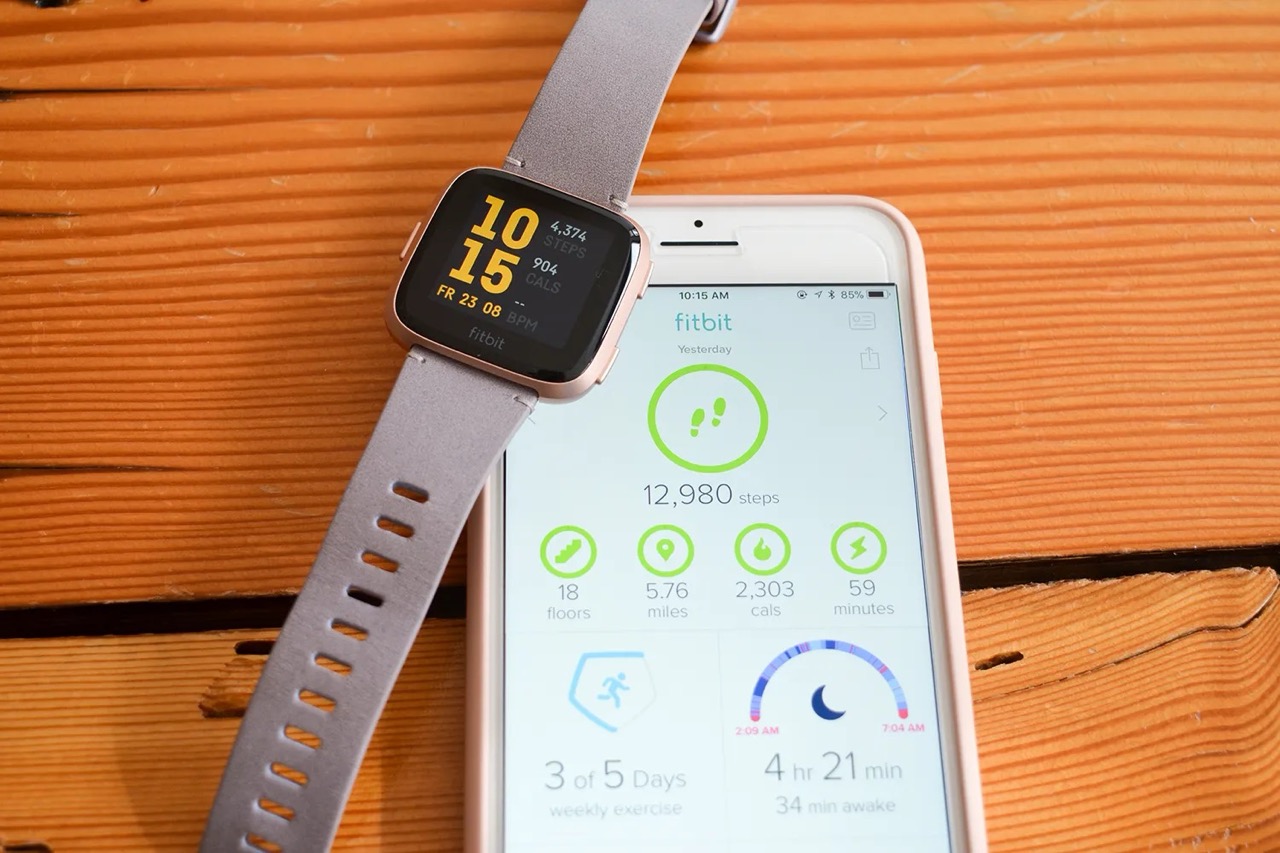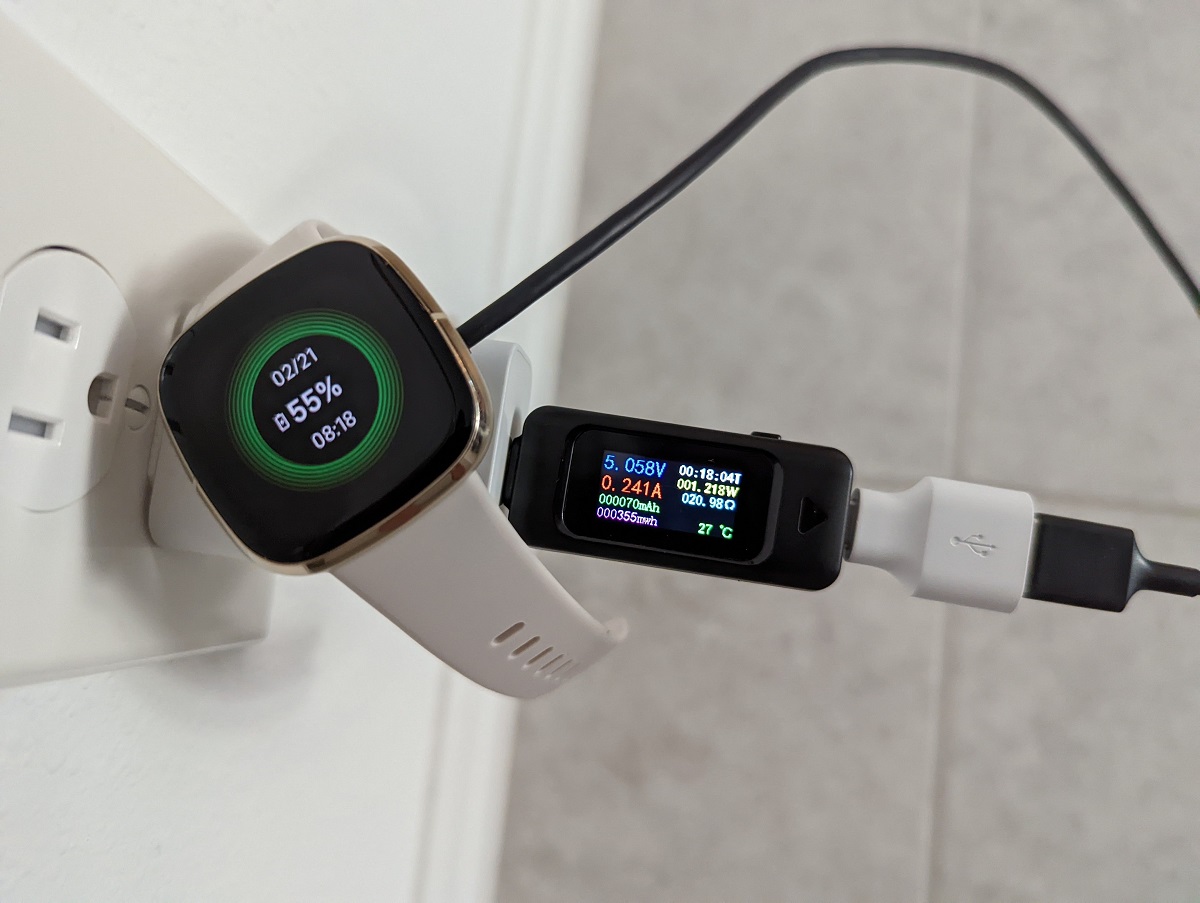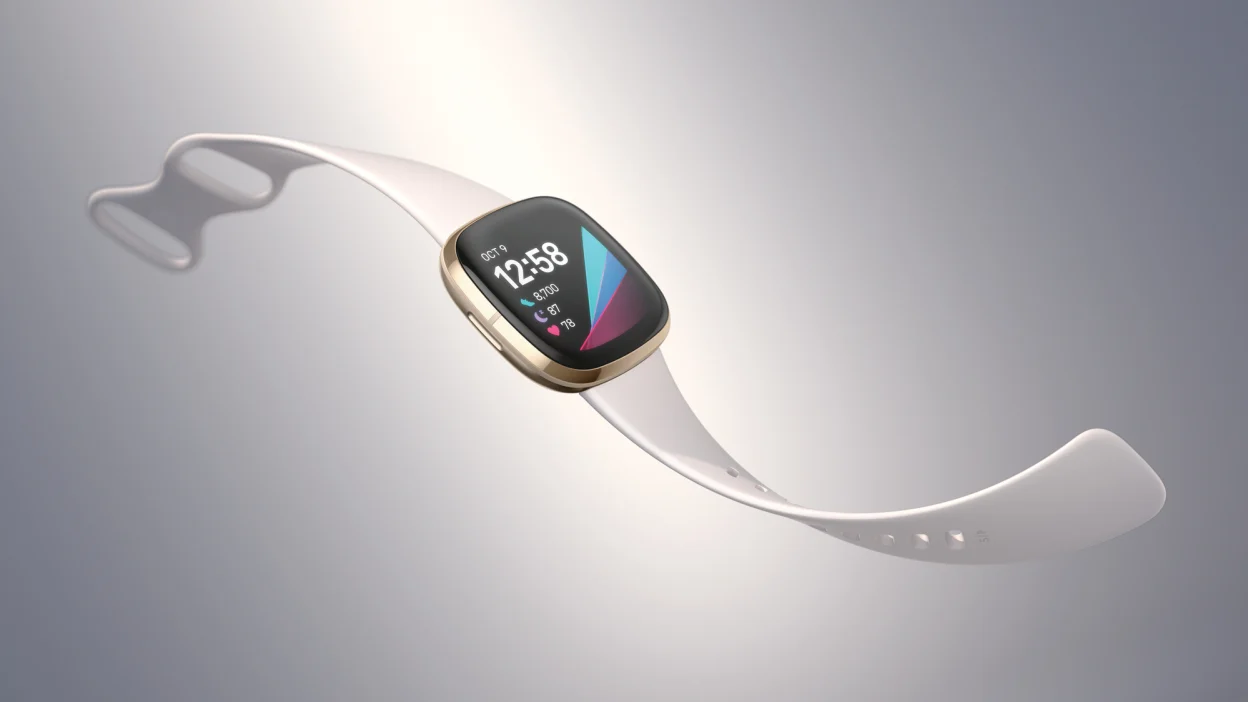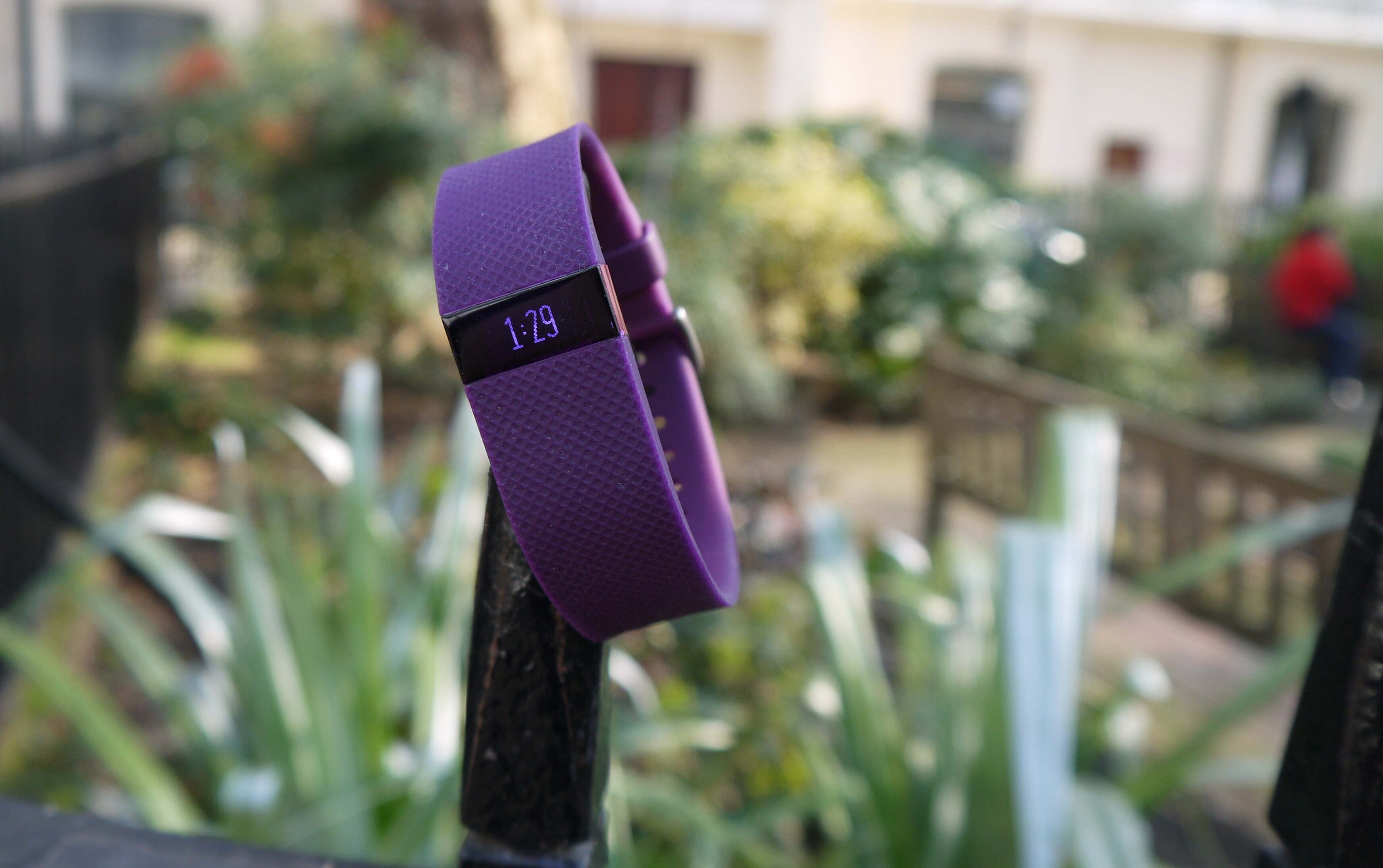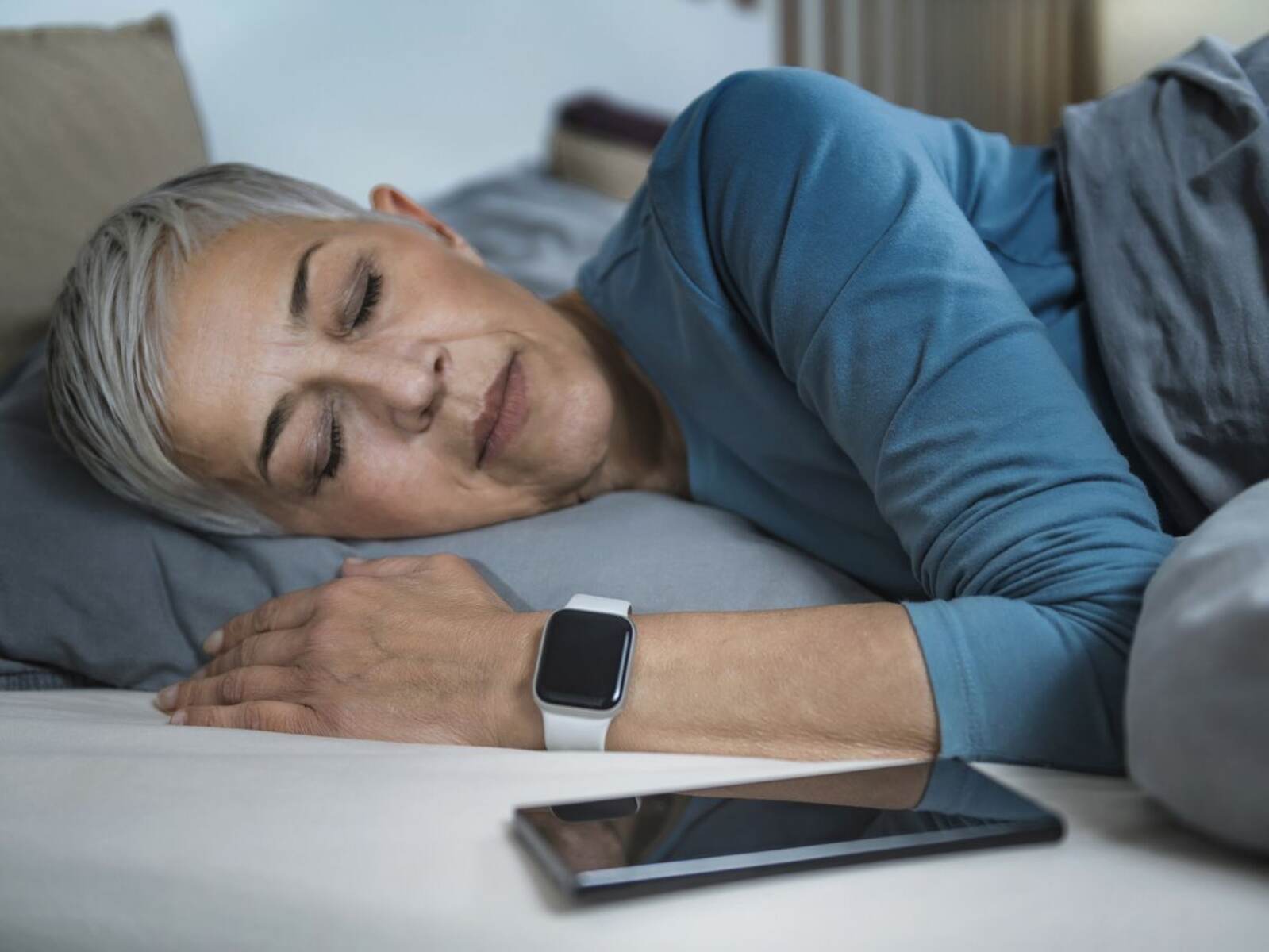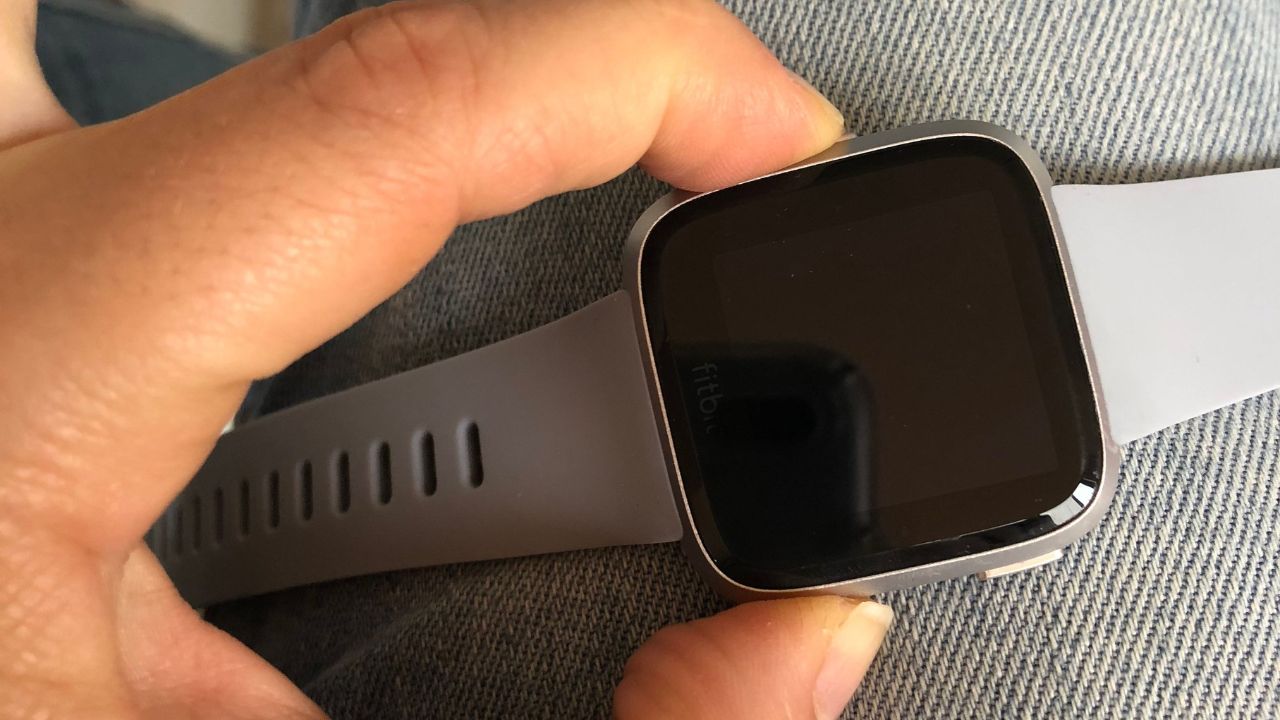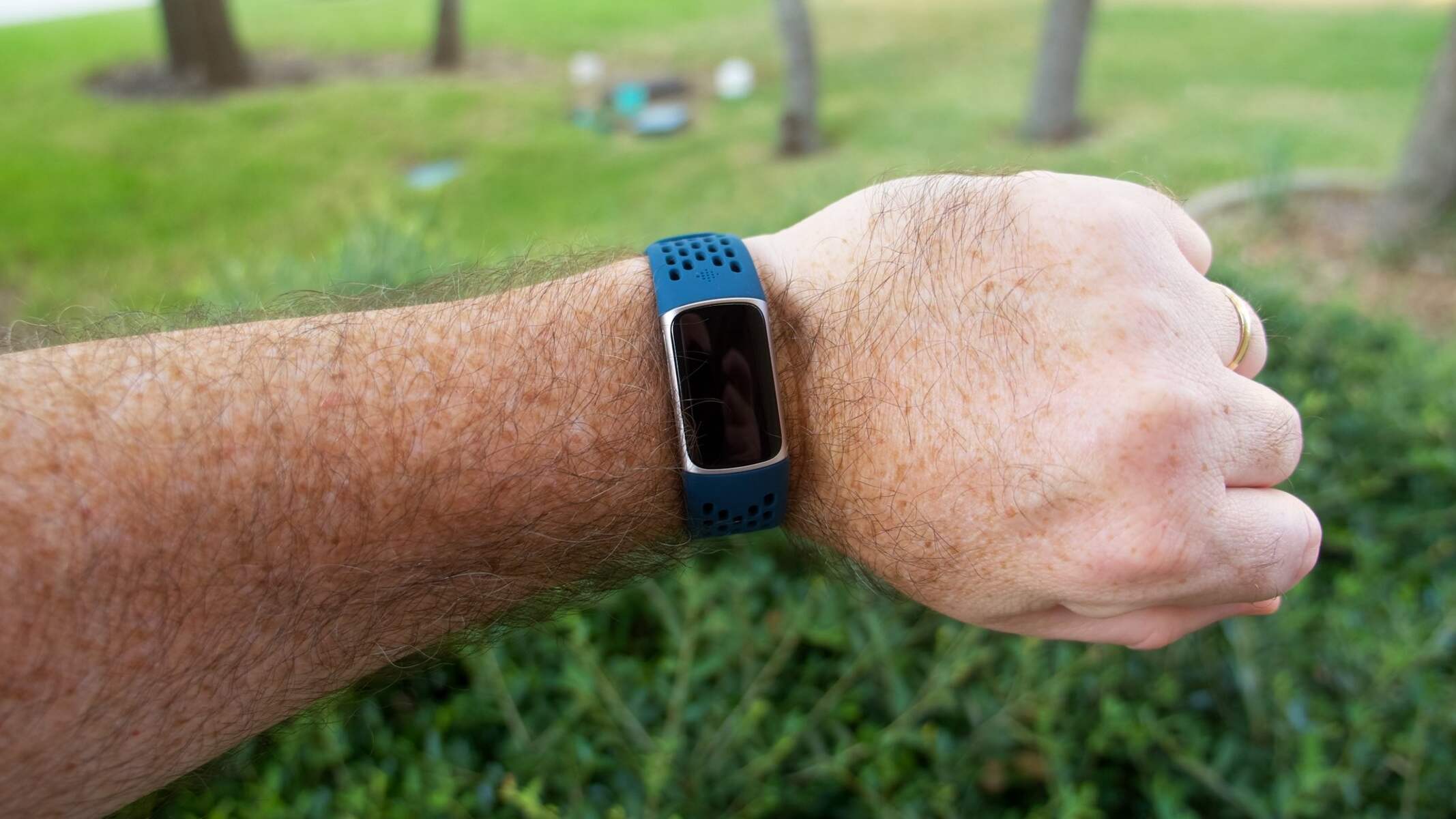Introduction
Wearable technology has revolutionized the way we approach fitness and health monitoring. Among the leading brands in this space, Fitbit has carved a niche for itself, offering a range of stylish and functional fitness trackers and smartwatches. These devices seamlessly sync with smartphones and other compatible devices via Bluetooth, enabling users to track their activity, monitor their health metrics, and stay connected on the go. However, despite the remarkable advancements in wearable technology, users may encounter frustrating connectivity issues that disrupt the seamless experience they expect from their Fitbit devices.
When it comes to fitness enthusiasts and individuals striving to maintain an active lifestyle, a reliable Bluetooth connection between their Fitbit device and smartphone is crucial. This connection facilitates the transfer of data, such as activity stats, heart rate measurements, and sleep patterns, to the Fitbit app on their mobile device. Additionally, it allows for real-time notifications and call alerts to be conveniently displayed on the Fitbit device, ensuring that users stay informed and connected during their workouts and daily activities.
In the fast-paced digital age we live in, encountering Bluetooth connectivity problems with our Fitbit devices can be exasperating. Whether it's a Fitbit Versa, Charge, Inspire, or any other model, the frustration of dealing with intermittent Bluetooth disconnections or the inability to establish a connection altogether can be a major inconvenience. These issues can hinder the seamless synchronization of data and impede the overall user experience, potentially leading to a sense of disconnect from one's fitness journey and health monitoring goals.
Understanding the common Fitbit Bluetooth connection issues and equipping oneself with effective troubleshooting steps is essential for users to regain control over their wearable devices. By addressing these challenges, users can restore the seamless connectivity that is integral to maximizing the utility and enjoyment of their Fitbit devices.
In the following sections, we will delve into the prevalent Bluetooth connection issues faced by Fitbit users, unravel the underlying causes behind these challenges, and provide comprehensive troubleshooting steps to help users overcome these obstacles and restore the seamless connectivity they deserve.
The introduction provides a compelling overview of the significance of Bluetooth connectivity for Fitbit devices, setting the stage for the subsequent sections that will delve into the troubleshooting steps. The narrative is engaging and relatable, aiming to captivate readers and draw them into the topic.
Common Fitbit Bluetooth Connection Issues
Bluetooth connectivity issues can be a source of frustration for Fitbit users, disrupting the seamless integration of their devices with their smartphones and impeding the transfer of vital health and activity data. Understanding the common Fitbit Bluetooth connection issues is the first step toward resolving these challenges and restoring the uninterrupted connectivity that users rely on for their fitness tracking and health monitoring needs.
-
Intermittent Disconnections: One of the most prevalent issues experienced by Fitbit users is the intermittent disconnection of their devices from their smartphones. This sporadic loss of Bluetooth connectivity can disrupt the real-time transfer of data and notifications, undermining the user experience and hindering the seamless tracking of activity and health metrics.
-
Failure to Establish Connection: Some users encounter difficulties in establishing a Bluetooth connection between their Fitbit devices and smartphones. This inability to initiate the pairing process can lead to frustration and inconvenience, preventing users from accessing the full functionality of their Fitbit devices and app integration.
-
Syncing Problems: Fitbit users may also encounter syncing issues, where the data recorded on their devices fails to transfer accurately to the Fitbit app on their smartphones. This can result in discrepancies in activity tracking and health metrics, compromising the reliability of the data used to monitor progress and make informed health-related decisions.
-
Delayed Notifications: Another common issue pertains to delayed or inconsistent notifications being displayed on the Fitbit device. This can impact the user's ability to stay informed about incoming calls, messages, and app alerts, potentially leading to missed communications and interruptions in their daily activities.
-
Battery Drain: In some cases, users may experience accelerated battery drain on their Fitbit devices due to Bluetooth connectivity issues. This can diminish the device's battery life, necessitating more frequent recharging and disrupting the uninterrupted usage of the device throughout the day.
Understanding these common Fitbit Bluetooth connection issues empowers users to identify and address the specific challenges they may encounter with their devices. By recognizing the symptoms and underlying causes of these issues, users can effectively implement targeted troubleshooting steps to restore the seamless Bluetooth connectivity that is integral to their Fitbit experience.
Troubleshooting Steps
Addressing Fitbit Bluetooth connection issues requires a systematic approach to identify and resolve the underlying causes of these challenges. By implementing targeted troubleshooting steps, users can effectively restore the seamless connectivity between their Fitbit devices and smartphones, ensuring uninterrupted data synchronization and real-time notifications. Here are comprehensive troubleshooting steps to navigate through common Bluetooth connection issues:
-
Check Bluetooth Settings: Begin by verifying the Bluetooth settings on both the Fitbit device and the paired smartphone. Ensure that Bluetooth is enabled on both devices and that they are within close proximity for optimal connectivity. Additionally, check for any interference from other electronic devices that may disrupt the Bluetooth signal.
-
Restart Fitbit Device: Performing a restart on the Fitbit device can help rectify temporary software glitches that may be affecting Bluetooth connectivity. This can be done by accessing the device's settings and initiating a restart or by following the specific restart instructions for the respective Fitbit model.
-
Restart Mobile Device: Similarly, restarting the paired smartphone can clear any temporary issues that may be impeding the Bluetooth connection with the Fitbit device. Powering off the smartphone, waiting for a few seconds, and then powering it back on can effectively refresh the Bluetooth link.
-
Update Fitbit App and Firmware: Ensure that the Fitbit app on the smartphone is updated to the latest version available on the respective app store. Additionally, check for any firmware updates for the Fitbit device itself and install them as per the manufacturer's instructions. These updates often include bug fixes and improvements that can address Bluetooth connectivity issues.
-
Reset Fitbit Device: If the aforementioned steps do not resolve the Bluetooth connection problems, performing a reset on the Fitbit device may be necessary. It's essential to refer to the specific reset instructions provided by Fitbit for the respective device model, as this process will restore the device to its factory settings, potentially resolving persistent connectivity issues.
By methodically implementing these troubleshooting steps, users can effectively diagnose and address Bluetooth connection issues with their Fitbit devices. These measures aim to restore the seamless connectivity that is vital for the reliable transfer of data and notifications, empowering users to fully leverage the capabilities of their Fitbit devices in their fitness and health monitoring endeavors.
Check Bluetooth Settings
Ensuring that the Bluetooth settings on both the Fitbit device and the paired smartphone are optimized is a fundamental step in troubleshooting Bluetooth connection issues. By meticulously examining and adjusting these settings, users can lay the groundwork for establishing a robust and stable Bluetooth connection, facilitating seamless data synchronization and real-time notifications.
To initiate the troubleshooting process, users should first navigate to the Bluetooth settings on their Fitbit device and ensure that Bluetooth functionality is enabled. This can typically be accessed through the device's settings menu, where users can verify that the Bluetooth feature is activated and ready to establish connections. It's essential to confirm that the Fitbit device is discoverable and actively seeking to pair with the designated smartphone.
Simultaneously, users should access the Bluetooth settings on their paired smartphone and confirm that Bluetooth is enabled and operational. It's crucial to ensure that the smartphone is set to be discoverable and open to establishing connections with nearby devices, including the Fitbit device. This reciprocal readiness on both the Fitbit device and the smartphone lays the foundation for a successful Bluetooth pairing process.
In addition to enabling Bluetooth, users should assess the physical proximity between the Fitbit device and the paired smartphone. Bluetooth signals have a limited range, and maintaining close proximity between the devices is imperative for establishing and maintaining a stable connection. Users should strive to keep the Fitbit device and smartphone within the recommended range for Bluetooth connectivity, minimizing the potential for signal interference or degradation.
Furthermore, users should be mindful of potential sources of interference that could disrupt the Bluetooth signal between the Fitbit device and the smartphone. Other electronic devices, such as Wi-Fi routers, cordless phones, and microwave ovens, can emit signals that interfere with Bluetooth connectivity. By identifying and minimizing exposure to such sources of interference, users can optimize the Bluetooth environment for their Fitbit devices, enhancing the stability of the connection.
By meticulously checking and optimizing the Bluetooth settings on both the Fitbit device and the paired smartphone, users can establish a robust foundation for troubleshooting Bluetooth connection issues. This proactive approach sets the stage for subsequent troubleshooting steps and lays the groundwork for restoring the seamless connectivity that is integral to the Fitbit experience.
Restart Fitbit Device
Restarting the Fitbit device is a fundamental troubleshooting step that can effectively address temporary software glitches and irregularities that may be impeding Bluetooth connectivity. By initiating a restart, users can refresh the device's operational state, potentially resolving underlying issues that hinder the seamless synchronization with the paired smartphone.
To perform a restart on the Fitbit device, users can follow specific instructions tailored to the respective model. Typically, the restart process involves accessing the device's settings or utilizing physical buttons to initiate the restart. It's important for users to refer to the official guidelines provided by Fitbit to ensure that the restart procedure is executed accurately and effectively.
Upon initiating the restart, the Fitbit device undergoes a controlled shutdown and subsequent reboot, akin to the process of restarting a computer or smartphone. This action serves to clear temporary data and reset the device's software components, potentially rectifying any transient issues that may be affecting Bluetooth connectivity.
The act of restarting the Fitbit device can be likened to a fresh start, allowing the device to recalibrate its internal systems and establish a clean operational slate. This can be particularly beneficial in resolving software-related hiccups that may manifest as Bluetooth connection issues, such as intermittent disconnections or failure to establish a connection with the paired smartphone.
Additionally, the process of restarting the Fitbit device can contribute to the overall stability and performance of the device, beyond addressing Bluetooth connectivity issues. It provides an opportunity for the device to undergo a self-diagnostic routine and reinitialize its core functions, potentially mitigating underlying software irregularities that could impact its overall functionality.
By incorporating the restart of the Fitbit device into the troubleshooting process, users can proactively address potential software-related impediments to Bluetooth connectivity. This methodical approach empowers users to leverage the full potential of their Fitbit devices, ensuring that the seamless integration with their smartphones is restored, and the uninterrupted transfer of data and notifications is reinstated.
In summary, restarting the Fitbit device serves as a pivotal troubleshooting step, offering the potential to resolve transient software irregularities that may impede Bluetooth connectivity. By adhering to the prescribed restart procedure for the respective Fitbit model, users can navigate through common Bluetooth connection issues and restore the seamless connectivity essential for maximizing the utility of their Fitbit devices.
Restart Mobile Device
Restarting the paired smartphone is a pivotal troubleshooting step in addressing Fitbit Bluetooth connection issues. This straightforward yet effective measure can alleviate temporary software irregularities and refresh the smartphone's Bluetooth functionality, potentially restoring the seamless connectivity with the Fitbit device.
To initiate the restart process, users should power off their smartphones using the designated power button or software controls. After the device has been powered off, it is advisable to wait for a brief interval before powering it back on. This brief pause allows the smartphone's internal components to reset and reinitialize, contributing to the effectiveness of the restart.
The act of restarting the mobile device serves to clear temporary data and reset the operational state of the smartphone's software components, including its Bluetooth functionality. This process can effectively address transient issues that may be impeding the establishment and maintenance of a stable Bluetooth connection with the paired Fitbit device.
Moreover, restarting the smartphone provides an opportunity for the device to undergo a self-diagnostic routine upon reboot, potentially identifying and rectifying underlying software irregularities that could affect its Bluetooth performance. This proactive measure aims to optimize the smartphone's overall stability and functionality, beyond addressing Bluetooth connectivity issues.
By incorporating the restart of the mobile device into the troubleshooting process, users can proactively mitigate potential software-related impediments to Bluetooth connectivity. This methodical approach empowers users to restore the seamless integration with their Fitbit devices, ensuring uninterrupted data synchronization and real-time notifications.
In summary, restarting the paired smartphone is a fundamental troubleshooting step that can effectively address transient software irregularities and optimize the Bluetooth functionality, thereby facilitating the seamless connectivity with the Fitbit device. By adhering to the prescribed restart procedure for the smartphone, users can navigate through common Bluetooth connection issues and restore the uninterrupted transfer of data and notifications, enhancing the overall user experience with their Fitbit devices.
Update Fitbit App and Firmware
Ensuring that both the Fitbit app and the firmware of the Fitbit device are updated to the latest versions is paramount in addressing Bluetooth connection issues. Regular updates often include bug fixes, performance enhancements, and optimizations that can directly impact the Bluetooth functionality, potentially resolving underlying connectivity issues.
Updating the Fitbit App
Users should navigate to the designated app store on their smartphones, whether it's the Apple App Store for iOS devices or the Google Play Store for Android devices, and check for updates to the Fitbit app. If an update is available, users should proceed to download and install it in accordance with the app store's guidelines.
By updating the Fitbit app, users can benefit from the latest improvements and optimizations designed to enhance the overall user experience and address potential software irregularities that may affect Bluetooth connectivity. These updates often include refinements to the Bluetooth synchronization process, ensuring a more robust and stable connection between the Fitbit device and the paired smartphone.
Updating the Fitbit Device Firmware
In addition to updating the app, users should also verify if there are any firmware updates available for their Fitbit devices. This can typically be done through the Fitbit app on the paired smartphone, where users can access the device settings and check for available firmware updates.
If a firmware update is available, users should proceed to initiate the update process as per the manufacturer's instructions. These updates often encompass critical optimizations and bug fixes that directly impact the device's Bluetooth functionality, potentially resolving connectivity issues and enhancing the overall performance of the Fitbit device.
By diligently updating both the Fitbit app and the firmware of the Fitbit device, users can leverage the latest enhancements and optimizations to maximize the reliability and stability of the Bluetooth connection. This proactive approach aims to address potential software-related impediments and restore the seamless integration between the Fitbit device and the paired smartphone, ensuring uninterrupted data synchronization and real-time notifications.
In summary, updating the Fitbit app and firmware represents a pivotal troubleshooting step, offering the potential to address underlying software irregularities and optimize the Bluetooth functionality. By adhering to the prescribed update procedures for both the app and the firmware, users can navigate through common Bluetooth connection issues and restore the seamless connectivity essential for maximizing the utility of their Fitbit devices.
Reset Fitbit Device
In the event that the preceding troubleshooting steps do not effectively resolve the Bluetooth connection issues with the Fitbit device, performing a reset may be necessary to restore the device to its factory settings. It's important to note that a reset should be approached with caution, as it will erase all data and personalized settings on the Fitbit device, essentially returning it to its original state.
Before proceeding with a reset, users should ensure that they have backed up any essential data, such as activity logs and personalized settings, to prevent permanent loss. Fitbit provides detailed instructions for performing a reset on each of its device models, and users should closely follow these guidelines to execute the reset accurately.
The reset process typically involves accessing the device's settings or utilizing physical buttons to initiate the reset. Users may be required to navigate through specific menus or input a sequence of commands to confirm the reset. Once initiated, the device will undergo a comprehensive reset procedure, erasing all user data and reverting to its factory defaults.
By performing a reset, users effectively clear the device of any persistent software irregularities or configuration conflicts that may be impeding Bluetooth connectivity. This process provides a clean slate for the device, potentially resolving persistent issues and restoring the seamless integration with the paired smartphone.
It's important to emphasize that resetting the Fitbit device should be considered a last resort, to be employed only when other troubleshooting measures have proven ineffective. Additionally, users should exercise caution and ensure that they have backed up any essential data before proceeding with the reset.
Following the reset, users can proceed to reconfigure the Fitbit device, re-establish the Bluetooth connection with the paired smartphone, and restore any backed-up data and settings. This comprehensive approach aims to address persistent Bluetooth connection issues and restore the seamless integration between the Fitbit device and the smartphone, ensuring uninterrupted data synchronization and real-time notifications.
In summary, while a reset of the Fitbit device represents a drastic measure, it can be instrumental in addressing persistent Bluetooth connection issues. By adhering to the prescribed reset procedure and exercising caution, users can navigate through common Bluetooth connection challenges and restore the seamless connectivity essential for maximizing the utility of their Fitbit devices.
Conclusion
In conclusion, the seamless Bluetooth connectivity between Fitbit devices and smartphones is a cornerstone of the user experience, facilitating the real-time transfer of data, notifications, and essential health metrics. The prevalence of common Bluetooth connection issues, such as intermittent disconnections, failure to establish a connection, syncing problems, delayed notifications, and battery drain, underscores the significance of effective troubleshooting measures to restore the seamless integration and functionality of Fitbit devices.
By systematically addressing these issues through a series of targeted troubleshooting steps, users can reclaim control over their Fitbit devices, ensuring that the Bluetooth connectivity remains robust and reliable. The initial step of checking Bluetooth settings on both the Fitbit device and the paired smartphone lays the groundwork for establishing a stable connection, minimizing potential sources of interference, and optimizing the Bluetooth environment.
Subsequently, the proactive measures of restarting the Fitbit device and the paired smartphone serve to refresh the operational states of these devices, potentially resolving transient software irregularities that may impede Bluetooth connectivity. Additionally, updating the Fitbit app and the device firmware ensures that users benefit from the latest optimizations and bug fixes, enhancing the overall reliability and stability of the Bluetooth connection.
In the event that persistent Bluetooth connection issues persist, the cautious execution of a reset on the Fitbit device may be necessary, providing a clean slate to address underlying software irregularities and restore the device to its factory settings. This comprehensive troubleshooting approach empowers users to navigate through common Bluetooth connection challenges, ensuring that the seamless integration with their Fitbit devices is reinstated, and the uninterrupted transfer of data and notifications is restored.
Ultimately, by equipping users with the knowledge and resources to effectively troubleshoot Bluetooth connection issues, this comprehensive guide aims to enhance the overall user experience with Fitbit devices. By restoring the seamless Bluetooth connectivity that is integral to the functionality and utility of these devices, users can confidently pursue their fitness and health monitoring goals, leveraging the full potential of their Fitbit devices to support their active lifestyles and well-being.







